sidetracks and detours present PASS IT ON 39 weekly walkabout supplement 11 2 2024
Sidetracks And Detours
present
PASS IT ON 39
weekly walkabout supplement 11 2 2024
Hello. We enjoyed your company along the sidetracks and detours this week, We somehow travelled widely without even leaving our tiny island of Lanzarote. We met up with the most upright instrument in the orchestra and even interviewed the guy who`played that double bass. The following night we went to see him play his double bass with a timple player and guitarist. He also played accordion on a couple of numbers and all the time we were listening to these musical maestros we knew we were in the presence of greatness. So impressed were we that the following day we visited the Timple Art Museum to learn much more Lanzarote´s favourite instrument. We even found a book on the history of the timple that might even be the only one of its kind published in English .So it has been a busy weelk, but here we are already, though enjoying another Sunday sabbatical with PASS IT ON. We will close this edition by giviong you a tiny preview of what will be collecting next week on our sidetracks and detours, and can assure you we will be travelling much further afield. So, hopefully, we will see you somewhere round the corner next week. .

CONTENTS

Researching History
FOLKIES AND FOLK DANCE
by Michael Higgins
All Across the Arts
Hamlet + recorded Q&A at HOME
Preview by Steve Cooke
Live Music
previewed by Manchester Folk
Live Jazz
CROWMARCH WINTER JAZZ AND BLUES
previewed by Jazz In Reading

Jazz On Air
Steve Bewick presents HOT BISCUITS
All Points Forward: A Readers Perspective´
LIVE MUSIC RECORDED
by Peter Pearson
Island Insights
LANZAROTE CARNIVAL
previewed by Norman Warwick
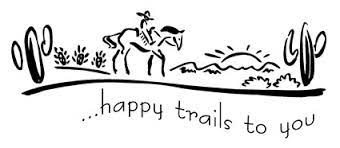

Researching History
FOLKIES AND FOLK DANCE
by Michael Higgins
In 21 January’s edition of PASS IT ON I wrote of Folk singing in the aftermath of Cecil Sharp. That was after I had reviewed David Sutcliffe’s new biography of Sharp, detailing his folk song and dance collecting days in the first two decades of the 20th century. Part of that story involved me in the 1970s. Today I turn to folk dance, in particular the Morris Dance, a phenomenon new to Sharp and a rather daunting task for him as solely a musician, and a classical one at that. In the early days he had the help of William Kimber, who had played concertina for, and had once danced with, the first Morris team Sharp encountered in the winter of 1899. Also he had the help of Mary Neal’s demonstration team of girls at the Esperance Working Girls Club. Soon he had help to organise other demonstration teams, one of them including his assistant, Maud Karpeles, and her sister Helen, despite the fact that the original dancers encountered by Sharp and others consisted of all male performers. In time, new English Folk Dance Society Morris Dance teams of men were formed, and the question of masculine bearing and its male historicity came increasingly to the fore. In 1934, ten years after Sharp’s death, the Morris Ring was formed of rather ‘middle class’ folk enthusiasts taught under Sharp’s method. Each newly taught team had a leader given the rather elitist and romantic name ‘squire’ and a treasurer given the pseudo biblical name ‘bagman’. Even the Morris Ring chief took the name ‘Squire’. Soon, reviving Shakespearean terminology, they began calling the revived dances ‘The Morris’.

This is where I came in forty years later during a burgeoning folk scene when I encountered the Oldham Tinkers folk trio in the Oldham Hotel One Sunday in Oldham, Lancashire (See Pass it On Dec 2023). One of the iconic Oldham trio was concertina player John Howarth, who had danced with the Traditional Royton Morris Dancers as a teenager in the 1950s. Royton is two miles to the north of Oldham. The Royton team was not a Sharp style team but a traditional one ‘revived’ by Maud Karpeles, after interviewing among others the leader, James Coleman, in 1928. The team was only partly disbanded at the time she visited as they had an intermediate boys’ team in operation in the 1920s and had fielded a full team of teenagers and adults throughout the 1890s to the beginning of the First World War. Indeed there may have been a team in Royton in the 1870s and earlier, accompanying the annual Wakes rush carts. The rush cart processions were an annual renewal of church floor rushes carried on all over the Oldham area. The war had interrupted all Morris Dancing in the Oldham area, some of the Royton men had been gassed and had breathing difficulties, two had been killed and the former leader, James Cheetham had also died on campaign in Salonika.
Karpeles was instrumental in finding survivors from the pre Great War dancers but in the process uncovered a rather hostile environment among these folk of the cotton mills and grimy streets of a Lancashire Mill town. Firstly, their long, processional and set piece dance routine, involving cotton rope ‘slings’ and clog stepping sequences, did not look like a normal Morris Dance in the Sharp experience And the leader, James Coleman, and lead concertina player Lees Kershaw were not a subservient forthcoming fount of knowledge for the London based English Folk Dance society she represented, but two men out for the main chance. The lead dancer, Robert McDermott however, was very supportive and opened up a rift between them. Robert and his many brothers had briefly operated a more entrepreneurial breakaway busking set of dancers before rejoining the fold in 1912 and disagreed with the more traditionally minded Coleman. James Coleman became even more possessive of the dance style and control of the team. In fact he became a cantankerous opponent of all things ‘folkie’, once locking members of local folk dance societies out of their practice room at Byron Street School.
Coleman’s team continued after the Second World War but was refreshed by a new set of boys for the coronation of Queen Elizabeth II in 1952. John had been one of these boys trained up in Byron Street School. I had actually seen the new schoolboys’ team as a boy before we emigrated to Canada but I thought nothing of it in the seventies. In fact my first encounter with Morris Dancers was of the ‘folk revivalist’ sort developed by Sharp and his followers and which Coleman looked down on.
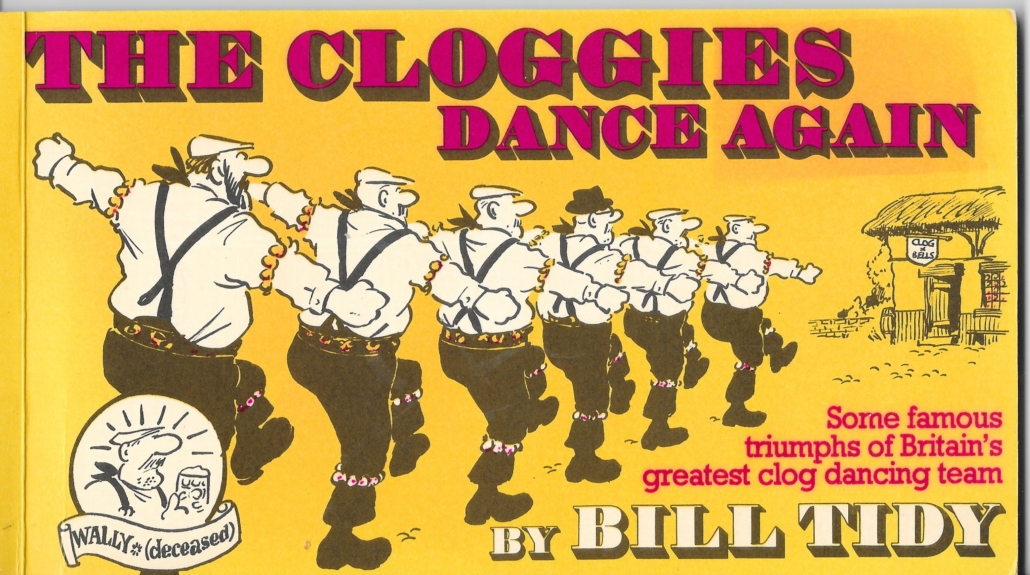
I had seen a poster advertising some high school clog dancers at an event in Oldham and went to see them. I had enjoyed reading Private Eye while living in Toronto and liked the Bill Tidy cartoon The Cloggies, a fictional Olympic champion clog dancing team led by the burly, no-nonsence dance leader, Stan. And remembering the clog wearing Royton Dancers of my childhood I went to see these teenagers. When I arrived I found they had changed their name to the Failsworth Morris Men, which lowered them somewhat in my esteem. After suffering through various stick dances and handkerchief waving dances of the Cotswold type, they finally donned their clogs and performed a three man routine known as The Ulverston Three Hand Reel. Ulverston, the birthplace of Stan Laurel of Laurel and Hardy fame, is in the far north of Lancashire, in the part known as Lancashire Over the Sands. Laurel had in his youth been a clog dancer too.
I was hooked. Could they teach me so I could show off to friends back in Toronto? No they couldn’t; I would have to come to practices and join the team. This was a turning point in my life as I not only chanced my arm in the knowledge that I could quit the team once I had learnt the steps, but I also met Lancashire Dialect performers Mary and Harvey Kershaw at that first event and got re-introduced to the dialect of my childhood, spoken by my aunts and uncles and my grandparents. My life has never been the same since. And I remained in the Oldham area despite many visits to my friends and family in Canada. I had embraced the Morris Dance, fascinated that in a dancing culture then completely dominated by women, men could dance together in homosocial innocence, and historical pride. And I fell for the official folk story of the day that Morris Dancing was a pagan fertility rite half suppressed by the church.
The Failsworth Morris Men were all teenage schoolboys in their last year of high school and were taught by their fiddle- playing geography master Jim Mainland. The team were members of the Morris Ring, the umbrella organisation for all ‘revival’ dance teams formed in their wake. Like all Morris Ring dancers of the day the Failsworth lads danced a variety of Cotswold styles, with hankies and sticks as portrayed in Sharp‘s and MacIlwaine’s Morris Book. But they did perform what they called The Failsworth Dance, for which they held short sticks or ‘tiddlers’ and wore clogs. Later I met one of the original (1909 dancers who told me they used cotton rope ‘slings’ and not sticks). Alas no one was interested in dancing anything more local. Nor did these lads ever dance in Failsworth itself, three miles from Oldham.
I and a fellow dancer, the team’s best, Martin, left this team due to tensions over local accountability. On my only ever attendance at a Morris Ring meeting (dancing weekend) in Winchester Martin and I were impressed by the praise we got for our Lancashire clog stepping. We attempted to research local steps and figures and get away from the folkie version of things. But the Failsworth lads would have none of it and stuck to their multi styled programme of Morris Ring type dances.
So we, along with two recruits we had persuaded to join, formed a proper Failsworth Dance team named after the Failsworth district of Wrigley Head which housed our pub. We had to recruit musicians from the folk club circuit, as no local folk one any more played concertinas or accordions etc. And of course many of us already attended folk clubs where the 1970s folk revival originated. Alas some lads were also in a Civil War re-enactment society. With the musicians also committed to Folk Festival engagements this was a potential point of disaster for keeping Morris Dance appointments.
Discontent soon surfaced. We did want to dance local material but where would we find it? Nobody wanted to dance Cotswold or any other area’s style of dance. Hence a flurry of activity by me in the local libraries and archives. Also a round of knocking on doors and seeking former dancers or sons or grandsons of dancers. I found a copy of John Graham’s 1909 book, Lancashire and Cheshire Morris Dances and devoured his baffling and rather misleading ‘Lancashire Figures’ described as taught by Michael Coleman, former Royton Morris Dance leader who had moved to Failsworth around 1900. Did all the Morris Dance figures come from Royton? Mr Coleman’s younger brother, James, had been Royton’s leader for thirty years when John Howarth of the Tinkers danced with them.
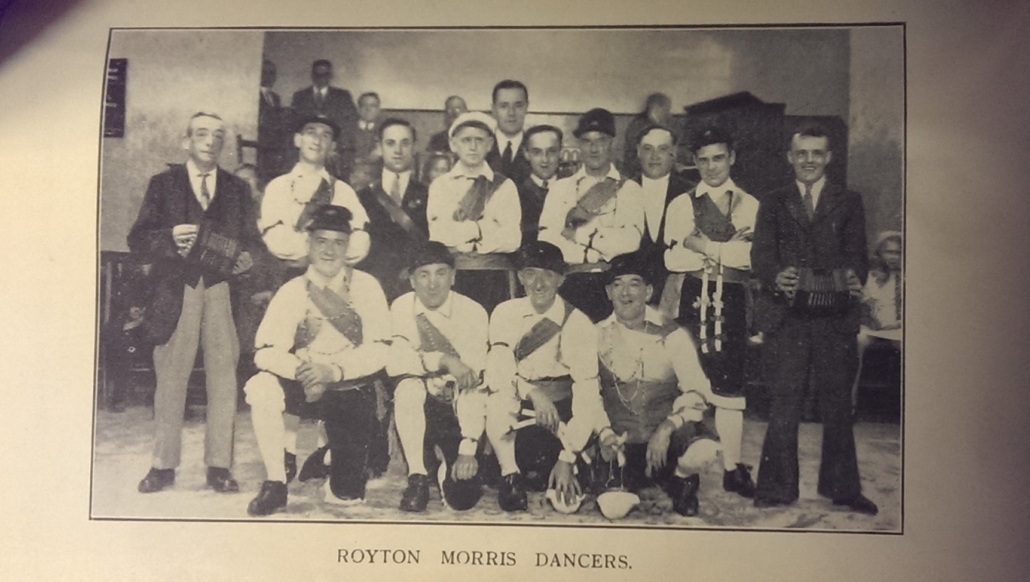
I was eventually able to peruse all the local newspapers and archives over the next few years to find that the Manchester to Oldham area held a rich heritage of Morris Dancing going back to 1800 and before (the red breeched coal miner dancers of the Hollinwood district of Oldham in the 1840s, the flower and feather hated and beribboned dancers of the Volunteer Oldham Rush cart descriptions of 1860s dancers ‘trying to tie their legs in knots’ etc. But all this paled when my Aunt Sarah told me that her husband, uncle Fred, had in his youth helped out with a carnival girl’s troupe (Oldham Bright Sparks) who tailored their simplified steps from the old Royton Morris dance as taught by one of the old Royton Morris Dancers.
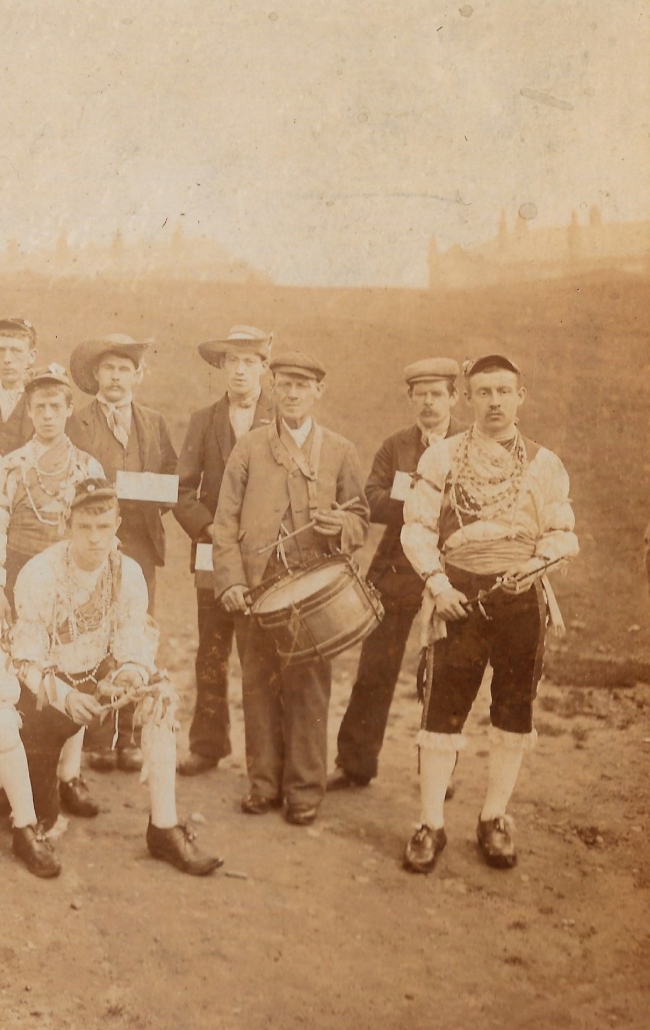
She put me in touch with their former leader, Lucy Bowler. Girl’s carnival dancing, though copied from men’s Morris Dancing had evolved into completely feminine, stereotyped competition dance by my childhood but in the 1920s, though becoming a girls’ preserve, still had the girls wearing male knee breeches and sashes. Confusingly, though the carnival dancers were then often called ‘morris dancers’. She also put me in touch with her friend, Mary MacDermott, whose husband Frank had danced, with the Royton Dancers before the First World War. Indeed his father had danced with James Cheetham (Frank’s uncle) in the 1890s. Almost at the same time a work colleague put me in touch with Ellis Marshall, the Royton Team’s concertina player from 1935, And Norman Coleman, dancer and son of the last leader in Royton who had died in 1971.
Jim MacDermott , Ellis and Norman Coleman, and Albert Salt of Mick Coleman’s pre First World War dancers all came to practice to show how local Morris Dance should be done, not from a book but by hands on learning. It was heavily influenced by the last Royton dancing style, rather than the earlier experience of Mr McDermott and Mr Salt. The Folkie element of the team however did not like the influence of these ‘old blokes’ and preferred picking and choosing the figures they taught, renaming them as separate dances, and dancing for a folk festival audience. Most did not seek any loyalty to local tradition and the team fell apart after 18 months due to the folk element choosing not to turn up for bookings if there was an alternative folk music event on elsewhere. Likewise the Civil War re-enactors whenever a battle was arranged which clashed with our dancing dates.
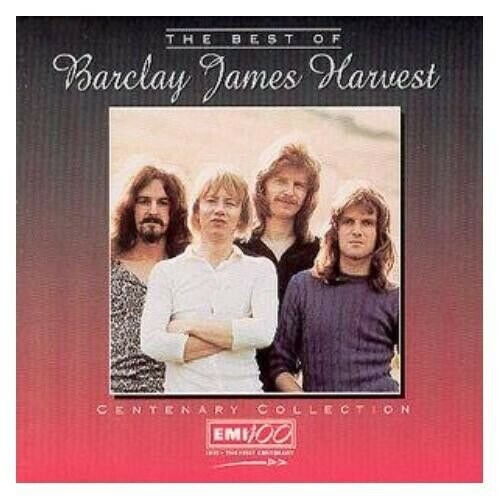
The end came for me when the majority refused to turn up for Failsworth Carnival and we lost our practice hut due to the Folkie majority wishing to practice at the pub instead of honouring our contract with the Scouts who needed the money income from its use. Also some of the folkies formed a mummers’ team and started missing practices. While the team was falling apart and practising in the pub car park instead of the Scout Hut they gained the uncanny attention of local pop band Barclay James Harvest, friends of a dancer from Mossley whom I had spent some time training up. Why they found a bunch of folkies prancing around waving cotton rope slings and dancing to concertina music is beyond me.

At this time Failsworth born Harry Boardman (right) heard of us and came down to practice nights with his wife Leslie. Harry was wonderful chap, who had started musical life as a bluegrass singer. As a local banjo and concertina playing folk singer he took a great interest in local songs and history, mainly social, political and industrial. He sent me to visit his mother who knew some of the old Failsworth dancers in Michael Coleman’s team. Before the team fell apart we had many a jolly night at the Packhorse Inn in Harry’s benevolent company. I sang a couple of times at events where Harry was the main guest. Like James Miller alias Ewan MacColl before him he was a devout Marxist but never doctrinaire or overbearing . Quite the contrary, as he had a very charitable understanding of my libertarian demeanour and seemingly relatively innocent youth. Well I did look young than. He humoured me well in his own way and I recall him with great fondness.
After a few weeks of break up in the Queens Jubilee Year, 1977, six of the steady, none folkie dancers, suggested honouring a date in Royton with a rump team of six and after our warm reception at Royton Oddfellows, by then our second home due to Norman and Ellis still living and entertaining in Royton, they voted to keep dancing in Royton. By this time we were joined by Jim McDermott’s two grandsons, Bernard and Tony, so we could field a team of eight in a very short time. We had been trained by old Royton dancers (many more old dancers turned out then to watch and advise) and I had more offers of information than I could handle. Ellis had put me in touch with another old Royton concertina player who had also played for Royton in the 1950s, the renowned Fred Kilroy, who sadly passed away shortly after. Fortunately for me his son, also called Fred, kindly sold me one out of a vast collection of around twenty awaiting collection from a folk music researcher.

As our new Royton team needed musicians (and I was by now totally fed up with folkies and folk clubs), I asked Ellis Marshall to teach me to play the concertina as he had been taught by Lees Kershaw in the 1920s. I practised daily in my lunch breaks in part of the old cotton mill in which I then worked. The hardest part was to keep the rhythm for the dancers and not worry about mangling the tunes.
Over the next few years we trained up and fielded a team of boys as well as adults and danced in local venues around the east of Manchester and even into the West Riding of Yorkshire, developing the traditional processional dance as taught to us and which was originally used for escorting the rushcarts or simply dancing from town to town after the rushcarts demise. We performed the many figures of the set dance which could be done in any order called by the conductor with his whistle, and the ‘dance off’ which had been perfected by bare-knuckle boxer James Cheetham, the scourge of wife beaters and the chap ‘who could dance on a feather’, as taught to us by his nephew Frank McDermott. Most of this was not in Maud Karpeles’s book.
Initially all went well until job hunting and school leaving eventually broke up the men’s team and folkie ways lost us at least one dancer to a rival folk style team starting up in nearby Mossley. To our dismay he taught them part of the Royton dance, pretended it was from Mossley and, in folkie fashion called it the ‘Roughtown Dance’ named after a Mossley district. There followed a rush of folkies trying to copy our dance, as the Royton Dance was well known in a folkie version from Maud Karpeles’s limited book of 1930. Due to Royton’s relative obscurity she had called it The Lancashire Morris Dance as enthusiast down south had at least heard of the county.
Eventually Martin went to live in Saddleworth and, due to other commitments and work, our Nijinsky danced less and less with us. That area had also started a new team but, unable to find any local dancers they made up several dances named after various Saddleworth villages a la the usual Morris Ring team practice.
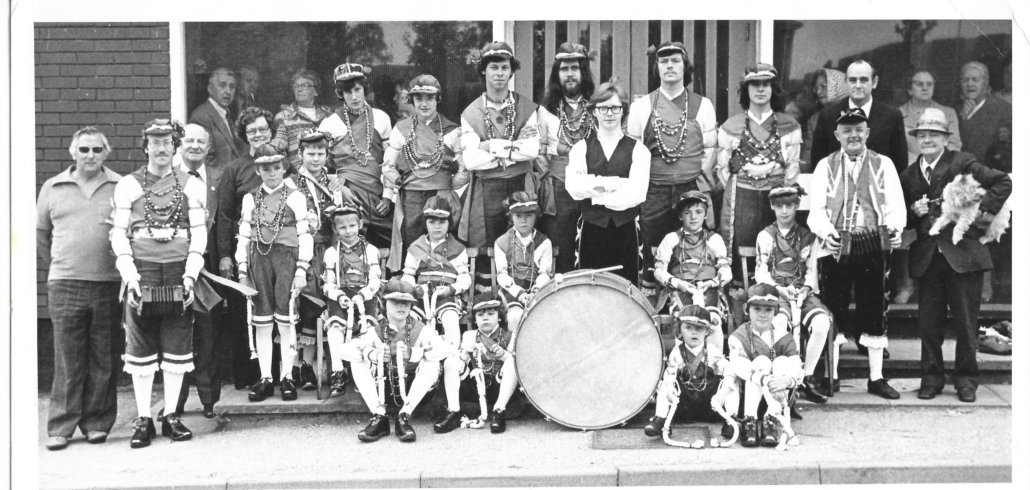
During that time folk dance tutors were seen noting down the figures of our dance at one event without asking our permission and I rather angrily confronted one of them by letter. He sent me an arrogant reply, including the comment that he and his colleague had been doing this sort of thing before any of us were born. The issue at stake was that all the work gone into learning the dance was a personal strain for me, involving visiting old dancers, and their families, some of whom lived many miles from the Royton area. My oldest informant could remember his father dancing in the 1890s.Add to this all the recruiting, training and costuming involved. These chaps were taking the lazy way out and illicitly notating a dance that was not theirs to steal. They were folk dance teachers, one of whom was particular responsible for teaching Morris Dancers all over England and abroad. and I felt we were being used. They were not the only ones to try to notate or film our dance without permission and I soon avoided taking any bookings that were likely to attract folkies. And when one folk organisation wanted to film us for an all England Folk Dance preservation archive I indignantly accused them of acting like the Warner Brothers and the British Museum. Ah the anger of the young!
Avoiding Folkies was self-defeating, as recruits usually loved the fame and glory of dancing in front of a camera and the only source of concertina or accordion players was likely to come from folk musicians. In that time we performed in public at exotic Southport, Blackpool Pleasure Park and before the cameras of ITVs Fun Factory, where Ellis had to join the musician’s union. I once did make my own recording with Ellis on Concertina, Norman on snare drum, with me also playing (base drum and concertina) at practice in St Paul’s Church Institute, Royton. Martin and I both called the dance and we all took turns on the big drum so the tape is mish- mash of an extended practice. Despite my best efforts I am informed a copy has ended up in the English Folk Dance and Song Society HQ in London with Norman listed as a concertina player!
With only a completely locally recruited boys team I needed adult recruits and of course new boys from time to time and the stress of being made redundant from my day job, plus my constant research into the origins and history of the local dance took its toll. Martin had gone to Saddleworth. Ellis had stopped playing due to his wife’s illness. Frank McDermott had passed away. I remained the only concertina player and dance conductor and had to seek outside help which was not forthcoming and had started studying for O and A levels which as a high school dropout I did not have. I gained a place as a mature student at the University of Manchester and was forced to disband the team temporarily. I also found a wife, Ironically, after a blind date set up by the mother of one of my dancers. I turned up with my dancing shirt still on, straight from the Carnival beer tent.
Other teams had pinched some of our traditional dance figures to choreograph ‘folkie type dances, And local Moris Ring groups were pressurising us to conform to the folk ethos. We had remained outside the Morris Ring and did not subscribe to any folk dance magazines or like literature. In fact few outside the area had realised the Royton Morris Dancers were still in being until I gave a talk to a conference on local dance history at Crewe and Alsager College in 1984, published in Traditional Dance and Song vol. 4 in 1986.
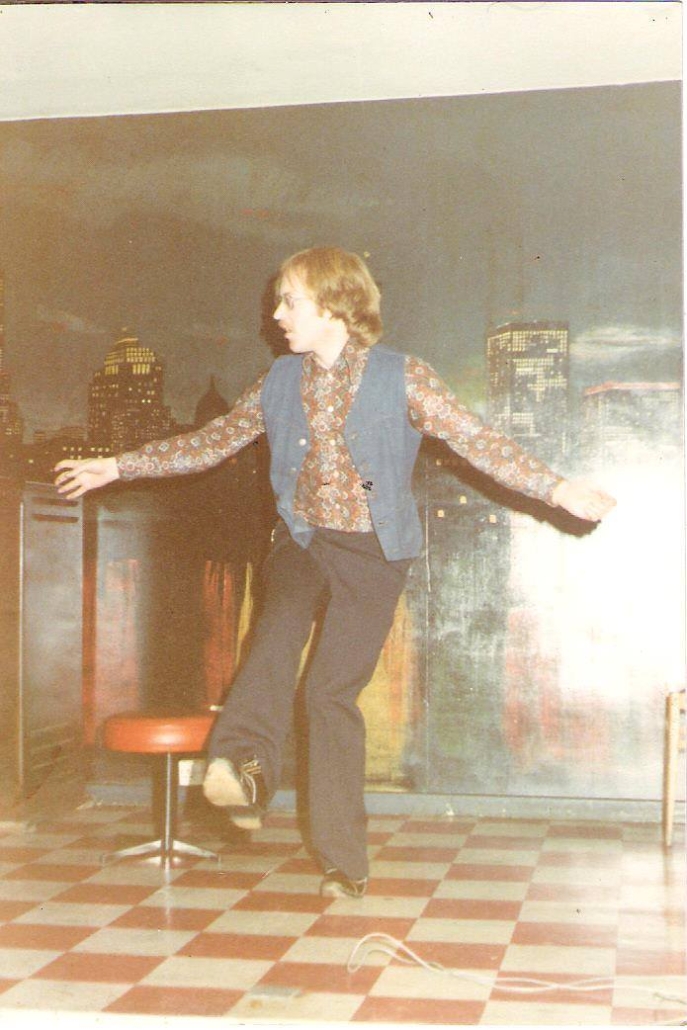
By that time I had gained a place at the University of Manchester, fully intending to reform the dancers after I had graduated and found a job. Alas I got a job which entailed Saturday working, seven day operations and 24 hour shifts. That reforming never came, and the Royton Morris Dancers, largely in being from the early 1890s, with one tantalising mention of a team in the 1870’s , and with a tradition stretching through the Oldham area back to 1800, ceased dancing on my watch. On reading David Sutcliffe’s new biography of Cecil Sharp and his search for the folk songs of England and its folk (mainly Morris Dancing) all this was brought back to me.
In my absence from the folk scene from the 1980s to 2011, when I walked into Norman Warwick’s Folk and Poetry evening at the Baum public house in Rochdale, I stayed away from Folk Clubs and Morris Dancers. That is save for my annual visit to see the Britannia Coconut Dancers every Easter in Bacup (see my Mime, Mimicry and Music -Sidetracks and Detour October 2021 ) During that time the folk boom of the 1970s and 80s had given way to a sharp decline in men’s dancing teams, whether of the folkie variety or the traditional one. Masculinism’s decline has been balanced by the steady growth of ladies’ teams, seeking out the remnants of early girl’s carnival dancing and the the ‘merrie England’ style of school taught ‘morris’ which in the 1880s and 90s favoured girls. One carnival team in Oldham in 1912 had been The Dancing Mill Lasses.
Jim McDermott, Ellis Marshall and Norman Coleman have all gone and I can see them now, as once happened, beset by folkies clamouring for hunting songs, folk plays, and the type of tunes beloved of the ‘peasantry’. Neither Ellis or the old dancers knew any folk songs and lived the contemporary life of working men’s club drumming (Norman) or singing his party piece Barefoot Days (Ellis). In fact the first tune Ellis learnt from Lees Kershaw was a children’s commercial tune called Horsey Cock Your Tail Up. But all the men loved the dancing that their families had nurtured since the demise of the rushcart days, along with the tunes that went with them. Maude Karpeles did not like the tunes they used and substituted them with what she considered more folk sounding tunes in her limited published version of the dance. The irony is that the Royton men were the Folk, and by Sharp’s definition she was not. But then, as poet, chronicler and novice dancer, was I?
Whatever I was I remained a clog dancer, once dancing on a table top at the famous Brown Cow on Yonge Street in Toronto and ultimately at Flanagan’s Bar at the Skyline Hotel at Toronto’s airport. On that occasion Mr Flanagan in his best Southern Irish intonation announced that he would now play a hornpipe for an English clog dance (The Manchester Hornpipe). ‘They do have them you know’, he smiled.


All Across the Arts logo
Hamlet + recorded Q&A at HOME
Preview by Steve Cooke

Two-time Academy Award nominee and Shakespearian titan, Ian McKellen, stars in this thrilling and uniquely modern take on The Bard’s classic tragedy. A special one-night event, the screening will include an exclusive recorded Q&A with Ian
With Ian McKellen starring and Directed by Sean Mathia. this tale of revenge that has stood the test of time, Shakespeare’s classic tragedy is reimagined for the modern day as a gripping psychological thriller!
Transcending the confines of the stage in a uniquely modern take, the film utilises nearly every room of the Theatre Royal Windsor to transform it into the immortal Elsinore Castle, from basement dungeon to roof-top battlement. Ian McKellen – reprising his lead role as Hamlet, a man who descends into madness as he seeks vengeance against his uncle for the apparent murder of his father – leads a stellar cast including stage and screen legend, Steven Berkoff, and stars of the critically acclaimed, recent stage cast of Hamlet: Frances Barber (King Lear, Chekhov’s The Seagull), Jonathan Hyde (King Lear, Titanic, Crimson Peak), Jenny Seagrove and BAFTA-winner Francesca Annis, bringing their iconic roles to life in this compelling new film adaptation.
Tuesday 27 February 2024
HOME, 2 Tony Wilson Place, Manchester M15 4FN
Box Office 0161 200 1500


Live Music
previewed by Manchester Folk
Grace Petrie
Sat 24th Feb | Academy 2
Manchester Folk have long been big supporters of Grace Petrie, a firm favourite at Manchester Folk Festival having appeared numerous times to sold-out audiences. Her new single ‘Start Again‘ was released last week. This is the first single from the Frank Turner produced album, ‘Build Something Better‘, due for release Friday 8th March. If, like us, you can’t wait until March, you can hear songs from the new album and witness the ferocious lyricism and powerful energy that Grace is known for at her Manchester Academy gig on Saturday 24th February.
£19.80
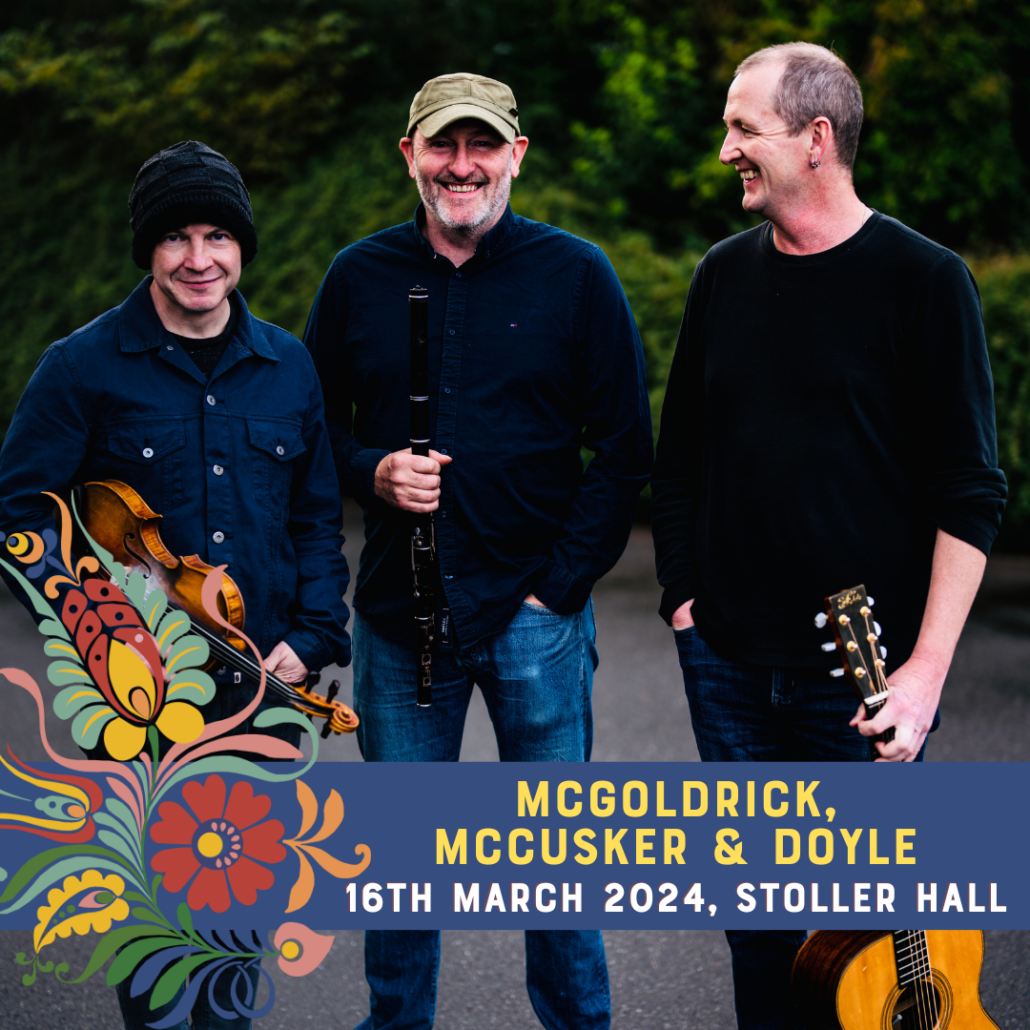
McGoldrtick, McCusker & Doyl
16th March | Stoller Hall
Folk music’s legendary triumvirate of musical magpies Mike McGoldrick, John Doyle and John McCusker return to Manchester, bringing you their own blend of top-class folk songs, tunes and charming bonhomie.
£24.00
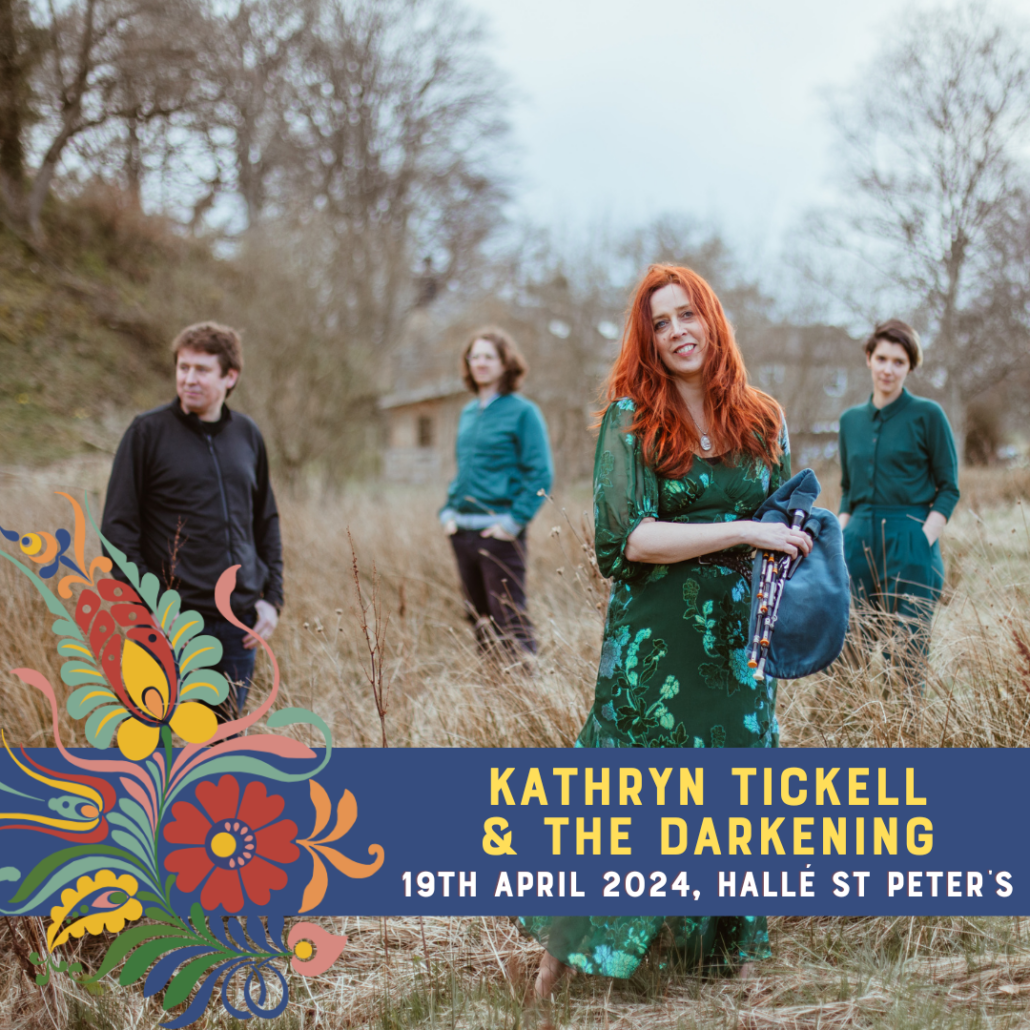
Kathryn Tickel & The Darkening
19th April | Hallé St Peter’s
Kathryn Tickell & The Darkening explore the connecting threads of music, landscape and people over a period of almost 2000 years. Witness glorious vocal harmonies and the wildest of piping. Together these dazzling musicians create dynamic and unique musical magic.
£24.20


Having topped the Official Folk Music Chart in October, and stayed firmly in the top ten since then, The Mary Wallopers return to number 1 in January with ‘Irish Rock n Roll’ (BC Recordings).
They are touring the album in March 2024, you can see their full tour date

Hot on their heels at number 2 is the new album, ‘All Aboard’ (Island), from Port Isaac’s favourite singing fishermen, Fisherman’s Friends. Famously discovered while singing in their hometown harbour, followed by movies, a musical and that Glastonbury appearance, Fisherman’s Friends deliver another dose of traditional shanties under the Island Records banner.

At 6 is the 3CD Various Artists release ‘Les Cousins – The Soundtrack of Soho’s Legendary Folk & Blues Club’ (Cherry Red/Strawberry) featuring names who passed through the doors of the basement club in its ’60s heyday including Paul Simon, Martin Carthy, Sandy Denny, Bert Jansch, Nick Drake, Shirley Collins, Davy Graham, John Martyn and more.

The final new entry lands at number 10. His 27th studio album, ‘This Is What I Want To Say’ (Pipe) by Martyn Joseph is described by Folk Radio as, ‘Songs of love and longing, of place and time, of finding certainty amid contradictions, this is what he wants to say, and, as ever, he says it with heartfelt eloquence and is always worth hearing.’
Sound Roots, who work in synergy with Manchester Folk, tell us that their most recent newsletter mail out is packed full of open call opportunities for artists which we hope will kick start an exciting year of showcasing and career building. See below for open calls to perform at Cambridge Folk Festival in July, to showcase on Prince Edward Island in Canada in September and at WOMEX Manchester in October. We also have a final call out for artists wanting to perform at English Folk Expo 2025 in March next year.
WOMEX 2024 in Manchester, England will be taking place from Wednesday 23rd to Sunday 27th October, presented by host city partner Manchester Music City and delivered by the English Folk Expo team. The call for artists wishing to showcase is now open. There is also an open call for DJs, film, conference proposals and mentoring.
Applications close on Friday 1st March 2024.
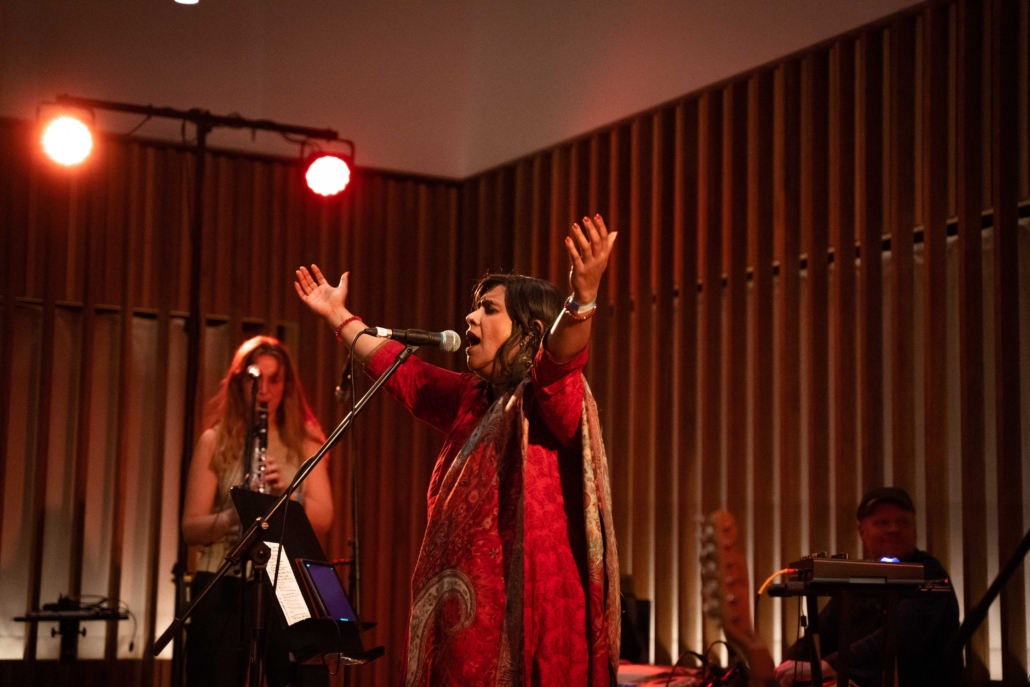
Each year, Sound Roots select around 60 artists to showcase to delegates at English Folk Expo in Manchester’s Northern Quarter. Many of these artists perform as part of the public programme of Manchester Folk Festival. Eligible artists should be resident in England or English by birth and perform music in the broad genre of folk, roots and acoustic music. This includes global / worldwide and singer-songwriter genres. English Folk Expo will take place from 20th-22nd March 2025.
Applications close at midnight on 11th February 2024.
Cambridge Folk Festival
The Greater Manchester Showcase Open Call

English Folk Expo are pleased to announce a special partnership with Cambridge Folk Festival for 2024. Supported by funding from Greater Manchester Combined Authority (GMCA), English Folk Expo has the opportunity to showcase four artists from, or resident in, Greater Manchester, who work in the genre of folk, roots or acoustic music, at this year’s Cambridge Folk Festival.
Applications close at midnight on Sunday 25th February 2024.
English Folk Expo and Music PEI on Prince Edward Island, Canada are delighted to announce the second instalment of a special artist exchange. Following a very successful exchange in 2023, we will be selecting one England based singer-songwriter, in the folk, roots, acoustic genres, to work with a musician from PEI, collaborating on new music.
Applications close midnight Sunday 10th March 2024.
Sound Roots at SXSW and Folk Alliance International
Sound Roots CEO Tom Besford (left) will be at both Folk Alliance International Conference (21st-25th February) in Kansas City, Missouri and at SXSW (8th-16th March) in Austin, Texas. To contact Tom to arrange a meeting at either event, email Tom.


Live Jazz
CROWMARCH WINTER JAZZ AND BLUES
previewed by Jazz In Reading

Crowmarsh Jazz presents
Wallingford Winter Blues
and Jazz Weekender 2024

Friday 16 to Sunday 18 February
Sponsored by Wallingford Town Council and BunkFest
Fri 16 Feb
5 pm Launch Event The Night Herons | Town Hall | Free | Tickets
7.30 pm Jazz and Blues Divas – Fleur Stevenson, Rebecca Poole & Vimala Rowe | Corn Exchange | £20 | Tickets
9 pm Hendrix & Hip Hop – Denny Ilett plays Jimi Hendix followed by MC Conrad | Wallingford Masonic Centre | £10 | Tickets
Sat 17 Feb
10.30 am Cholsey Silver Band | Waitrose | Free | Just turn up
10.30a m Funky Friday (on a Saturday!) with Maff Potts | Family Centre| Free | Tickets
12.30 am Live Jazz in the Town Square – Mix of Surprise artists | Town Square | Free | Just turn up
2.00 pm Stuart Henderson & Jez Cook | Bunkline | Free | Tickets
2.30 pm Film Screening – Soul (PG) Pixar Music Animation | Town Hall | Free | Tickets
5.00 pm Four + One | 5 Little Pigs | Free | Just turn up
7.30 pm A Night of Frank & Louis with Enrico Tomasso & Denny Ilett | Corn Exchange | £20 | Tickets
8.30 pm Hugh Turner Heavy Funk | The Dolphin | Free | Just turn up
10.30 pm Late Night Jazz & Blues Jam | The Dolphin | Free | Just turn up
Sun 18 Feb
11.00 am Fleur Stevenson & Maff Potts | Waterside Court Care Home | Free | Just turn up
2.30 pm Oxford Community Gospel Choir | St Mary’s Church| Free | Just turn up
5.00 pm Sounds of Blue Note – Pangbourne Jazz Club featuring Ben Cummings | OPO | Free | Just turn up
7.30 pm Brothers from Another Mother | Town Arms| Free | Just turn up


Jazz On Air
Steve Bewick presents HOT BISCUITS

Join Steve Bewick and Gary Heywood-Everett for a broadcast of our Valentines Suite of romantic jazz. This will include some old favourites from Chet Baker, Miles Davis and Billie Holiday, with some new contenders from John Leighton, Jill Torvaney and Jim McJannet and more besides.
If this sounds interesting please PASS IT ON your friends 24/07 and join us at www.mixcloud.com/stevebewick/ Enjoy with an Easter egg, some cool jazz.


All Points Forward: A Reader´s Perspective
LIVE MUSIC RECORDED
by Peter Pearson
These days I find myself more and more returning to the live albums in my record collection. Not just the live albums but the recordings that I made from the BBC Radio 2 In Concert series and the live classical concerts from BBC Radio 3. Too often I’m finding that studio albums from some of my favourites are marred by either excessive loudness or alternatively a blandness that is far removed from the spontaneity of the live concert experience.

The first live album to enter my collection was John Stewart’s The Phoenix Concerts now regarded by many as one of the finest live albums in the folk/country genre, paving the way for what we now call Americana music.
The Phoenix Concerts was recorded in Phoenix Symphony Hall in 1974 and was his first live album, although his seventh solo release. Many of his fans regard it as his finest work and in my view still stands as that today. It is interesting to see what his comments were on it many years later.
“Nik Venet (his manager) said to John, ´Lets go to the place where they love you the best and record a live album´. It must have sounded a good idea at the time. However after two gigs had been arranged, the recording of the first night saw everything go wrong and nothing marketable was captured. That left one night to record a double album! One night, one take on every song!!
Venet recalled that, just for protection we went in that afternoon and recorded some stuff without the audience. But it was alright on the Saturday evening. We went in and luckily we got what we got, though the organ wasn’t plugged in so the organ you hear is leakage into another guy’s mic. It was totally crazy but out of twenty four tunes we managed to get twenty which were usable. There were no overdubs, absolutely none. Nik said “It’s a live album, warts and all.”
They decided not to fix it and Nik believes that had they tried to fix it that they would be fixing it still.
To me, many of those songs on the album that had been recorded earlier on his seminal and highly regarded California Bloodlines album, sounded even better in the live setting and the recording does not seem aged or sonically lacking even by modern day recording standards.
The Phoenix Concerts was a double vinyl album (subsequently released on CD) and the on-stage song introductions, banter and preludes to the songs gave it the live feel of a concert experience, whereas many live albums simply consist of live tracks often packaged into a single CD of less than 70 minutes duration. The Phoenix Concerts album was also recorded on one day at one venue, whilst the norm is to select tracks taken from performances from a number of venues.
Since the advent of digital and the internet many artists now offer live full concert downloads for purchase on their websites.
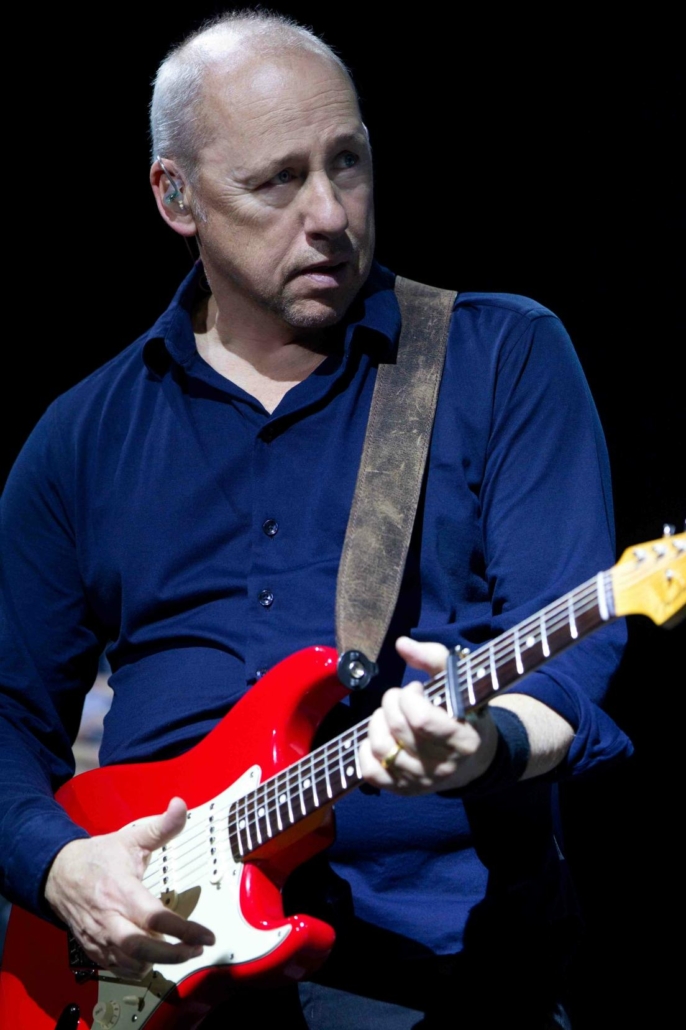
Mark Knopfler (right) has been offering these for all of his world tours since 2005 and fans like me who bought a concert ticket via his website for his Down The Road Wherever tour in 2019 were given free of charge a compilation tour download at the end of the tour. There was also the opportunity to buy a concert download for every venue performed on the tour. I have at least one download from all of his tours since 2005 and they are of excellent sound quality.

Neil Young (left) has recorded all his live concerts for a great many years. These are contained in his live archive. Periodically he issues these as subscriber downloads on his website and also issues them as commercial recordings. Whilst you can often hear obvious imperfections on the downloads, they are much less evident on the commercial releases. Springsteen, Billy Strings, the list goes on. At one time U2 were offering USB downloads of the concert at the venue immediately after the concert.
One of the problems with live concert downloads is that if they are issued directly from the soundboard mix, that mix would have been geared to the acoustics of a large venue and at sound levels at variance with the domestic listening environment. The better sounding live albums are usually remixed in the studio to smooth out rough edges and modify the sound levels. Thankfully all my live albums sound fine.

Steely Dan (right) are known for the sonic excellence of their albums Aja and Gaucho which were recorded with handpicked studio sessions musicians generally regarded as the best in class.Their attention to detail and number of takes to get each song as they wanted it is the stuff of legend. Many is the tale of an eminent musician brought into their recording sessions that was unable to deliver to their satisfaction. It was therefore with some trepidation that I attended their live concert for the first time. However, I found that whilst the sound was not as silky smooth as in the studio recordings it had an exuberance and spontaneity about it that more than makes up for it. Unfortunately, their first and only live album until very recently, Alive In America, was a big disappointment to me and other fans. Whilst recorded live it was a compilation of tracks from various concerts, only ten songs, no audience reaction on it, no song introductions and had been heavily overdubbed in the studio. Not until 2020 and after the death of Walter Becker did they issue a truly live album, Northeast Corridor, which received crtical acclaim.

This was closely followed by a live version of Donald Fagen’s The Nightfly (left) first released in 1982 which had garnered awards for its sonic excellence. Whilst the live version may not have quite reached that sonic excellence it was more than compensated by subtle changes in delivery of the songs and audience reaction. It felt like being at the performance.
Just recently I was watching a documentary featuring some of the finest musicians who were sidesmen to the singer songwriters emerging in the 70’s. The likes of James Taylor, Jackson Browne, Carole King, Don Henley in his solo career, Linda Ronstadt and a host of others. Now into their seventies they had formed their own band and when interviewed for camera they agreed that they much preferred playing live rather than having to spend hours, sometimes all night and into the morning on endless studio takes in order to satisfy record producers.
It is often the case that all those takes result in a record that just sounds over produced.
Whilst over production and compression of the dynamic range often spoil popular music studio albums; classical music albums can also suffer the same fate in the course of converting a live performance to disc.
With live radio concerts the broadcasters tailor the sound levels and mix to the domestic listening environment, although a variety of other factors concerning the performance is at play.
I have a number of fine Chamber Music Concerts recorded from BBC Radio 3. We used to attend the BBC Studio Seven Chamber Music concerts recorded live at Broadcasting House Manchester in the early evening and return home and record the taped recording which went out later that night.
I was pleased as punch when the advent of digital meant that I no longer had to flip the tape after 45 minutes. These recordings are also a lasting momento of the concerts attended.
Just to round this off, here are 5 of my current favourite commercially issued double live concert albums in the Americana genre:
1) The Phoenix Concerts- 1974 John Stewart;
2) Ramble in Music City- 2021 Emmylou Harris and The Nash Ramblers-note the recording is from a 1990 performance and the tapes were considered lost until found restored and issued in 2021. Sound quality is fantastic;
3) Live At The Old Quarter-1973 Townes Van Zandt;
4) Waiting For Columbus-1977 Little Feat;
5) Nine Tonight-1981 Bob Seger
If I was to do this another day numbers 2-5 may well change,
But I can’t see anything replacing number1.

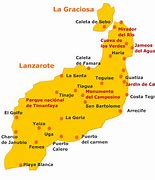
Island Insights
LANZAROTE CARNIVAL
previewed by Norman Warwick

Although the Lanzarote Carnival doesn’t hold as much prestige as that of Tenerife or Gran Canaria, many would note that Lanzarote´s Carnival is the oldest in the Canary Islands. Held since the fifteenth century after the arrival of the Spanish conquerors, its first written description tells of a festival based on aboriginal, Castilian and Moorish beliefs.
Despite the fact that the Arrecife Carnival attracts the most tourists on the island, every municipality celebrates its own with its particular traditions. The buches de Arrecife and the diabletes de Teguise are just some of the customs that still endure, perfectly demonstrating how each island and each neighbourhood celebrate their own way.
Prohibited during the dictatorships of Primo de Rivera and Franco, the Canarian people found a way to continue celebrating the carnival under the clandestine name of the Fiestas de Invierno (the Winter Festival). At present, in spite of the changes that it has undergone, the Carnival is still one of the most long-established festivals in the whole archipelago—a long-awaited period of respite for the islanders, in which to break with routine through costume and parades. Even though it is said that “carnival is lived, not written”, we’re going to have a go at least.
It is, through the memory of older people, how the Carnival has managed to endure over centuries, in spite of the inevitable changes that it has undergone in terms of its customs. Something that has not changed is its opening date, which varies between the end of January and the beginning of March, according to the annual season of Lent that succeeds it.
Like all ancient festivals, which are deeply-rooted in the life cycle imposed by nature, the Lanzarote Carnival has, since ancient times, been a way to celebrate the end of winter and, in turn, the end of harvest, the new sowing season and the hope of new springtime fruit. As if that weren’t enough, owing to Lanzarote’s maritime context this decisive event also celebrated the return home of fishermen after a long period out at high sea. In short, the Carnival emerged as a way to forget, even if only for a moment, the hardship and scarcity of rural life, and to celebrate life together with your loved ones.

Known as a period of social permissiveness and certain disorder, it is said that in Lanzarote’s most ancient carnivals, young people (and not so young people) wandered the village streets in groups with their faces painted black. Thanks to the generosity of ship-owners, who gave away fish to families for the duration of the festival, no house was ever lacking in sancocho (a dish made up of salted fish and potatoes) and wine. With their doors wide-open, the young people came in search of food and drink in exchange for singing and dancing. The story goes: “(…) Woe to him who refuses to accept this custom. Soon they will strike his house (…)”.
It is impossible to understand the Arrecife Carnival without the parrandas marineras de los buches: a very peculiar carnival tradition that draws on Lanzarote’s most authentic past. The spectacle is set to the sounds of foritos, or accordions, waltzes, habaneras (a Spanish and Cuban style of music), and los bucheros: those fishermen that, having recently returned to the island after a long period working at sea, wandered the streets decked out in peasant clothes, coloured ribbons and mesh masks. As their name implies, they did so armed with buches—fish bladders blown up with air—with which they playfully hit one another every time they saw each other.
Dancing and the parranda completed these walks, which, according to the memories of older people, sometimes ended up in minor scuffles. These are remembered as the pleitos de las cuatro esquinas, or the Four-cornered Brawls, and are another way of understanding the mischievous sense of freedom that people enjoyed over the course of the festival.
The same occurred with the diabletes de Teguise, or the little devils of Teguise, which are even older than the aforementioned buches. Originating from the Americas, most likely brought by a Lanzarote emigrant upon their return, their origin is as closely tied to the funerary rites of the Mahos—the indigenous people of Lanzarote—as the rites of passage to adulthood. The clothing worn by participants has always played a crucial role, turning them into diabletes through use of he-goat masks, goat skins and small sacks of sand used to beat the ground. Their mission? To chase children that they encountered in the street, shouting at them and scaring them while they performed macabre dances around them.

Although it is on record that even the Island Council of Lanzarote paid voluntary dancers during the eighteenth century, the reality is that the Church prohibited the festival in 1870 due to the satanic references that the traditional dress supposedly involved. As a consequence, the current outfits of the diabletes are made up of a black bull’s mask instead of a he-goat and muslin painted with diamond shapes as opposed to goat skin.
Fortunately, thanks to the initiative of a cultural association, it is still possible to enjoy this hundred-year-old tradition in Lanzarote. As an example of their effort to keep the island’s folklore alive, each year its members organise numerous shifts so that the streets of Teguise are never short of dancing diabletes.
As was mentioned at the start, between late January and early March Lanzarote is awash with colour and joy for the two-week celebration that is carnival, which gets underway with the customary proclamation. However, every year it is reinvented by well-known people from the island, with productions more akin to a performance than a traditional town-crier announcement.
Every day a new event takes place without fail, such as the Concurso de Murgas—an amusing singing competition poking fun at the political class—which boasts both a kids’ and adult version. Or the Gala Drag Queen, which parodies gender roles, social etiquette and social conventions by means of an original musical show. This is followed by the traditional Carnival, with the presence of buches and diabletes; the Carnival Queen pageant, more centred on the beauty of its contestants; and finally the Gran Coso, which is how the great parade of floats, bands of street musicians, troupes, drum ensembles and masked figures is known on the island. The event is one of the most remarkable due to the large amount of people assembled and its colourful display. It is at the Gran Coso where one can find leading figures from our time, from Presidents Trump and Putin, to unforgettable personalities such as Chiquito de la Calzada, Charlot and Groucho Marx.
The Quema de la Sardina, traditionally held on Ash Wednesday, the beginning of Lent, brings the Carnivals to a close by means of an ironic funeral procession, a symbolic burial of the past and social norms.


There will be plenty of arts related items to read in next week´s blogs, but should you require even further reading we have an easy to navigate archives section of over 1,000 free-to-read items. We return with our Sidetracks and Detours Monday to Friday not-for-profit blog on Monday 12th February and on our itinerary next week we visit the States to wave to Drive By Truckers before saying hello to their former vocalist Jason Isbell. We´re coming back to Lanzarote to keep tracks on one of favourite artists, before heading back across the Atlantic to consider The Best Of Born-Again Bob, however Someone´s Knocking At The Door, and Someone´s Ringing The Bell, so do us a favour and Let Ém In. And finally we find ourselves in a place where even The Devil Don´t Stay. All you need to do to follow us from your arm chair or sun lounger by checking the link coming up in a couple of lines time. Find your arts related news item, enjoy your read and share the link with your like-minded, arts loving friends. Thank you all. Happy Trails To You.
.



Leave a Reply
Want to join the discussion?Feel free to contribute!